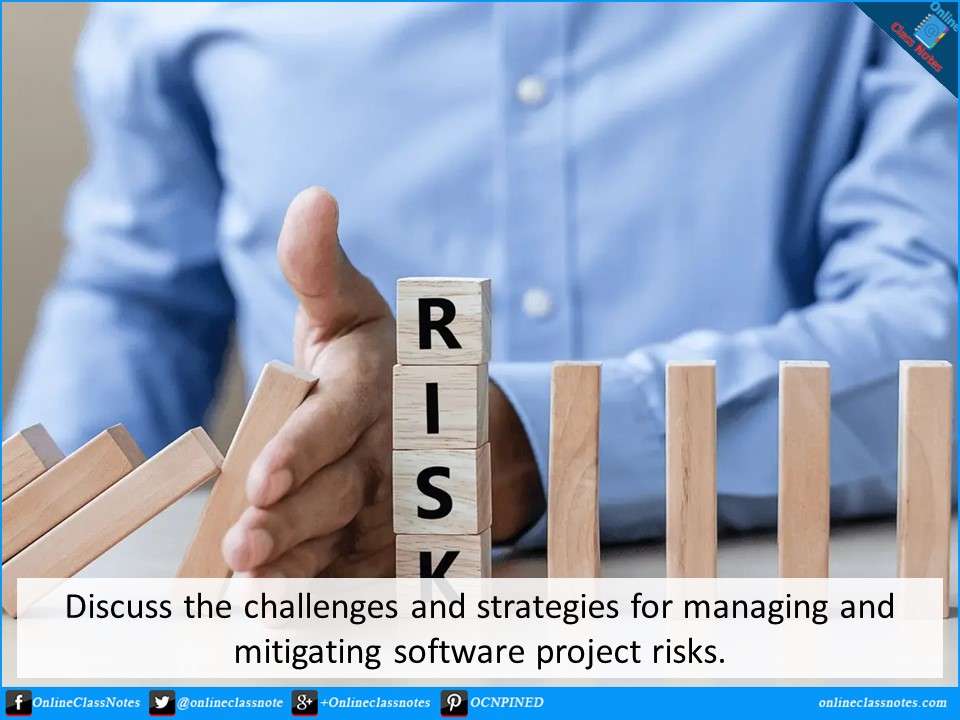Software Project Risk
In software engineering, a project risk refers to any factor or event that has the potential to adversely impact the successful completion of a software project. These risks can take various forms, including technical challenges, changing requirements, resource limitations, unexpected delays, budget constraints, and external factors like market shifts or regulatory changes. Each risk carries a level of uncertainty and the potential to disrupt project objectives, leading to issues such as missed deadlines, cost overruns, compromised quality, and, in some cases, project failure. Effective risk management in software projects involves identifying, analyzing, and proactively mitigating these risks to minimize their negative consequences and increase the likelihood of a successful project outcome.
Read More: What are the categories of risks in software engineering? Explain the process of risk management.
Challenges in Managing and Mitigating Software Project Risks
Managing software project risks is essential to ensure the successful completion of a project. However, it comes with several challenges:
- Uncertainty: Software projects are often uncertain due to changing requirements, technology advancements, and external factors. It’s challenging to anticipate all possible risks.
- Complexity: Software projects can be complex, involving multiple components, stakeholders, and dependencies. Identifying and tracking risks within this complexity can be daunting.
- Resource Constraints: Limited budgets, timeframes, and skilled personnel can limit risk mitigation efforts. Allocating resources to risk management competes with other project needs.
- Communication Gaps: Ineffective communication between team members and stakeholders can hinder risk identification and resolution.
Strategies for Managing and Mitigating Software Project Risks
To address these challenges, several strategies can be employed:

- Risk Identification: Start by identifying potential risks. This involves brainstorming sessions, analyzing historical data, and involving stakeholders.
- Risk Assessment: Assess the impact and likelihood of each identified risk. Prioritize risks based on their potential impact on project objectives.
- Risk Mitigation Planning: Develop strategies to mitigate high-priority risks. These strategies may involve contingency plans, risk avoidance, or risk transfer.
- Continuous Monitoring: Regularly monitor the project environment for new risks and changes in existing ones. Stay vigilant to emerging risks.
- Communication: Maintain open and transparent communication with team members and stakeholders. Encourage reporting of perceived risks.
- Contingency Planning: Develop contingency plans for high-impact risks. These plans outline actions to take if a risk materializes.
- Risk Acceptance: In some cases, it may be necessary to accept certain risks, especially if mitigation is impractical or too costly. Document the decision and its implications.
- Documentation: Keep thorough records of identified risks, assessment outcomes, and mitigation plans. This ensures a reference for future projects.
- Testing and Prototyping: Extensively test software components and consider prototyping to identify and address potential technical risks early.
- Regular Review: Periodically review and update the risk management plan throughout the project’s lifecycle.
Managing and mitigating software project risks is an ongoing process that involves identifying, assessing, and addressing potential risks. By employing these strategies and maintaining effective communication, software project teams can minimize the impact of risks and increase the likelihood of successful project outcomes.
